You can grow juicy and tasty fruit in your backyard. This will need a little bit of hard work and attention but the results you will get are in the form of delicious fruit.
But growing pear is easier than growing apples. The reason is that pear trees have fewer pest and disease issues. Another extra benefit is that pear trees don’t need large space to grow.
Pear trees take a few years to begin flowering and bear fruit but when they start producing fruit then you will see they are productive and long-lasting.
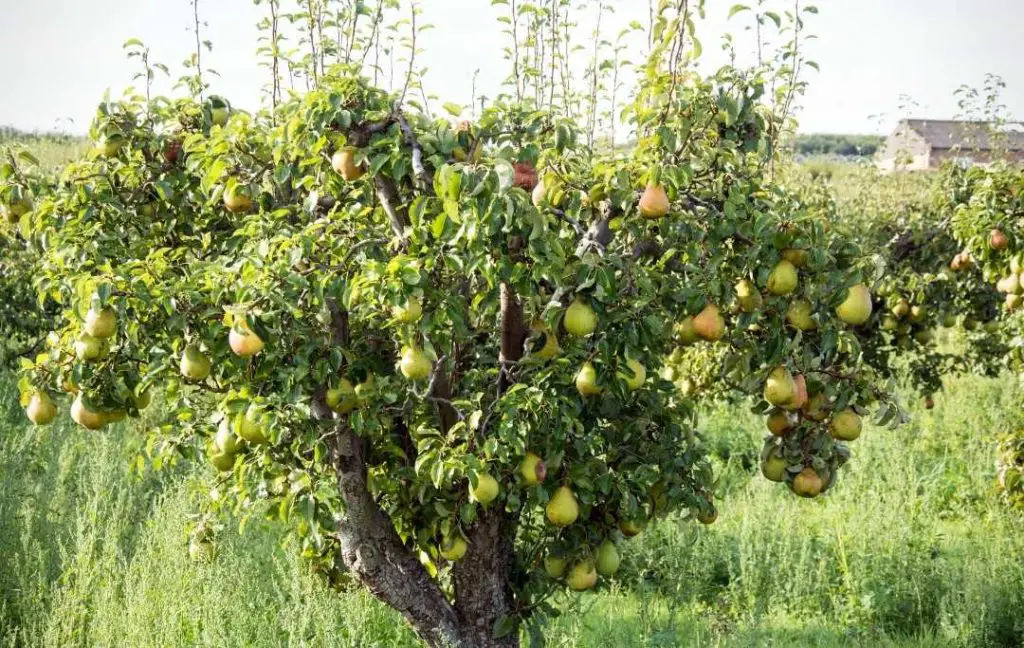
TYPES OF PEAR TREES
Few varieties of pear trees are reliably self-fertile and the majority are self-sterile. Some varieties can be eaten raw while some are best for cooking. The following are some varieties which will help you to choose.
1- BETH
It is a self-sterile variety. The taste of this variety is very sweet and juicy while the texture is very smooth. This is an early-season crop that produces tasty pears. Most varieties of pear start producing fruit in October but you will get fruit from the Beth variety in early September.
2- BEURRE BOSC
It is a self-sterile variety that has a soft and buttery taste. If you provide ample sunlight to variety then the texture of the fruit will be soft and melting. In a cold climate, the fruit of pear trees will become slightly crisper.
3- CONCORDE
This is of self-fertile variety that has excellent flavor and aroma. The texture of the fruit is smooth with a slight crispness. This variety is easy to grow and tolerates all the soil conditions. If you are an experienced gardener then you should choose this variety as it starts producing fruit early in its life.
4- CONFERENCE
It is a self-fertile variety but works better if you provide a suitable pollination partner. The taste of this variety is very sweet and soft.
5- BARTLETT
This is the best choice for growing a pear tree. The size of trees of this variety is average and produces medium to the large size of pear fruit.
6- KIEFFER
This variety is resistant to fire blight. The medium size of fruit of this variety can be used in canning.
7- ANJOU
The light green fruit of this variety has a sweet flavor. This variety is the best choice for late-blooming pears.
8- GORHAM
It is a self-fertile variety that produces sweet and juicy fruit. The texture of the fruit is smooth.
WHAT CLIMATE DO PEARS GROW IN?
Whether it is a small garden or large pears tree will enhance the beauty of that area where they are grown. The productive trees of pear are very rewarding.
You should choose a variety of pear trees which suit the climatic conditions of your area. You can get all the information about the varieties which can grow in your region from a local nursery or garden store.
Pear trees like to grow in cool and wet climates. Most varieties like to grow in those areas where the temperature rarely exceeds 32 degrees centigrade or 90 degrees Fahrenheit. Sufficient sunlight should be provided to the pear tree because it affects the color of the fruit.
HOW LONG DOES IT TAKE FOR A PEAR TREE TO GROW FROM SEED?
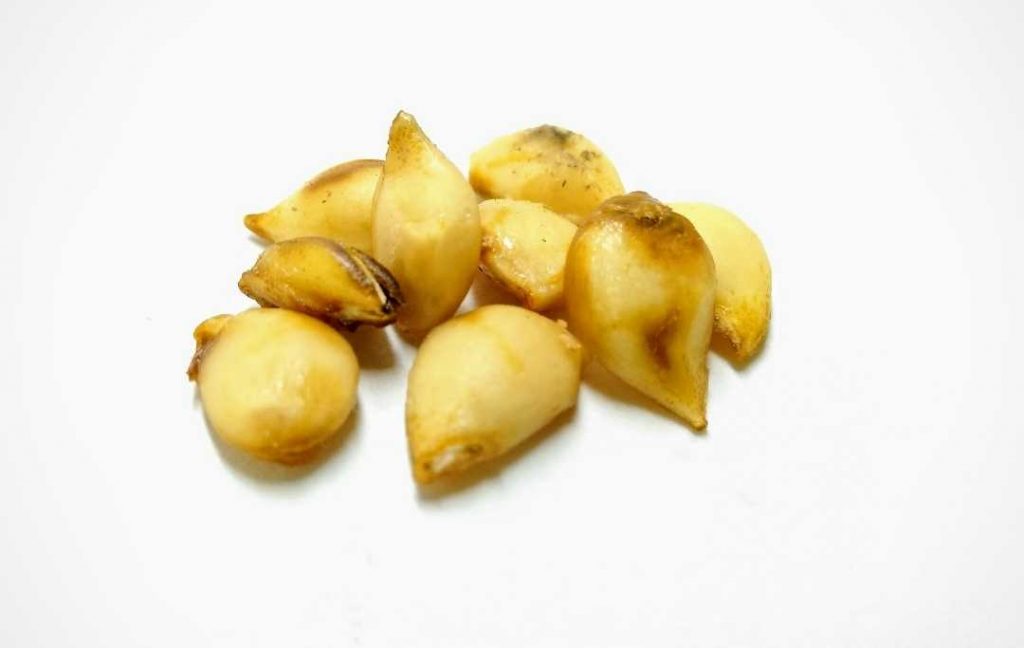
- The best time for collecting seeds of pear is in early February. The seeds of fruit will germinate best in the late Winter or early Spring.
- The store-bought pears will also work great for getting seeds. You need a sharp knife and cut the fruit in half. In this way, you can easily access the seeds in the core.
Soak the seeds in a bowl overnight. Those seeds which float to the top of the water are not good for sowing. Those seeds which sink to the bottom are good to grow.
You need 10 parts of water to one part of bleach for making a bleach solution. Soak the seeds in the mixture for 10 minutes before rinsing thoroughly.
You should place the seeds in an air-tight plastic bag with peat moss or sterile potting soil. Label the plastic bag and mention the date on which you put the seeds in it.
Now the next step is to put the plastic bag with seeds in the refrigerator for 4 months. You should check the seeds periodically and keep them moist. When 4 months have passed then you can plant the seeds in a small pot in a high-quality potting mix.
Remember seeds should not be sown more than one inch deep. It is recommended to plant one seed in one pot. Now choose a Sunny location for your pot and keep the soil moist for a faster germination process of seeds.
Generally, pear seeds germinate and start producing green growth within 3 months.
Read more
- How To Make DIY Mason Jars Herb Garden
- How To Grow Okra From Seeds In Containers
- How To Grow Grapefruit Trees In Pots?
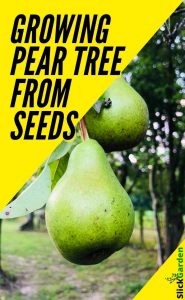
GROWING SEEDLINGS
- Take a plastic cup and fill it with potting soil. Sow the seeds half-inch deep in the soil of the cup. There should be an even distance between all of the seeds. For example, if you are planting four seeds then imagine the cup to be a clock and sow the seeds at 3, 6, 9 and 12 positions.
- Now water the seeds and wait for at least three weeks. Avoid overwatering because, in this way, your soil will be waterlogged. After two to three weeks you will see the seedlings will start emerging from the top of the soil.
- Now keep the cup in the sunny area. The seedlings of pear-like grow in a bright and warm area such as a windowsill. So they can germinate fast. If plants get more light then they need more water.
- If you want to increase the humidity of the seedlings then you can cover the cup with plastic wrap. This will help to retain the moisture within the soil.
The first leaves that you see are cotyledons, not true leaves. True leaves will develop over time and they look like leaves of a fully grown pear tree. When four leaves develop on your seedlings then this is the time to transplant them to a permanent position.
During the transplantation procedure, you should be careful so the roots of the seedlings will not be disturbed. You can transplant the seedlings in the larger pot.
TRANSPLANTING SEEDLINGS OUTDOORS
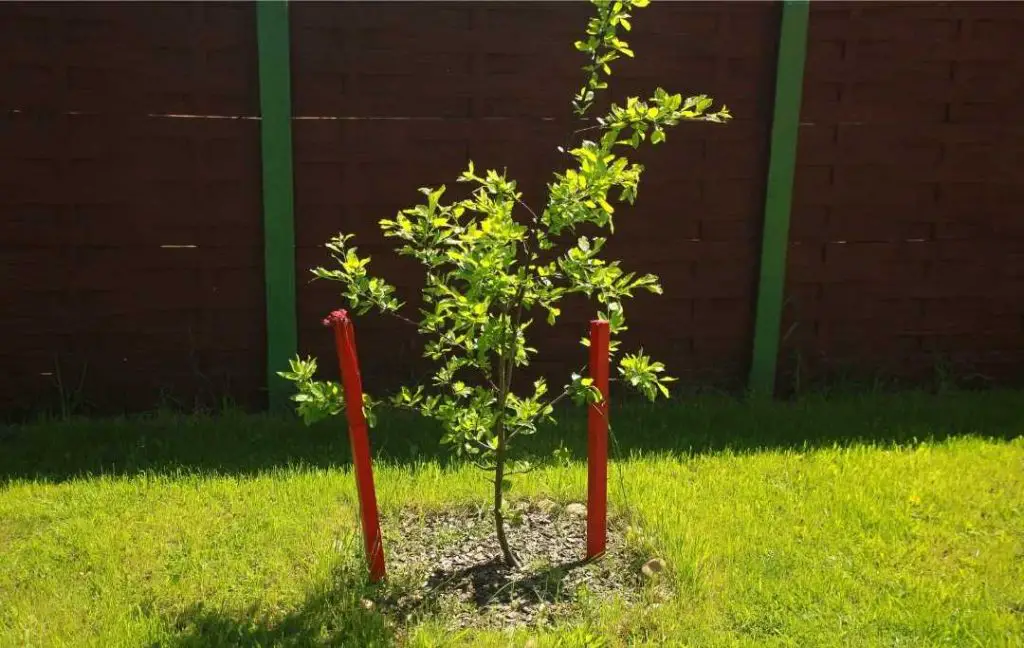
The best time for transplanting the seedlings outdoors is in May and June. You should transplant the seedlings early in the growing season so the plant can establish roots before winter, late spring or early summer is the best time for transplanting.
FIND THE BEST LOCATION
- Well-drained soil and full sunlight is needed for the better growth of the pear tree.
- Dig a hole of 12 inches wide and 12 inches deep. Fill the hole with water and measure the depth of water every hour. If the hole drains 1 to 3 inches each hour, it means the soil is well-drained.
- The roots of the pear tree spread over time, so select the location where your pear tree gets ample space. Keep the pear tree away from other plants.
HOW TO CARE FOR YOUR PEAR TREE?
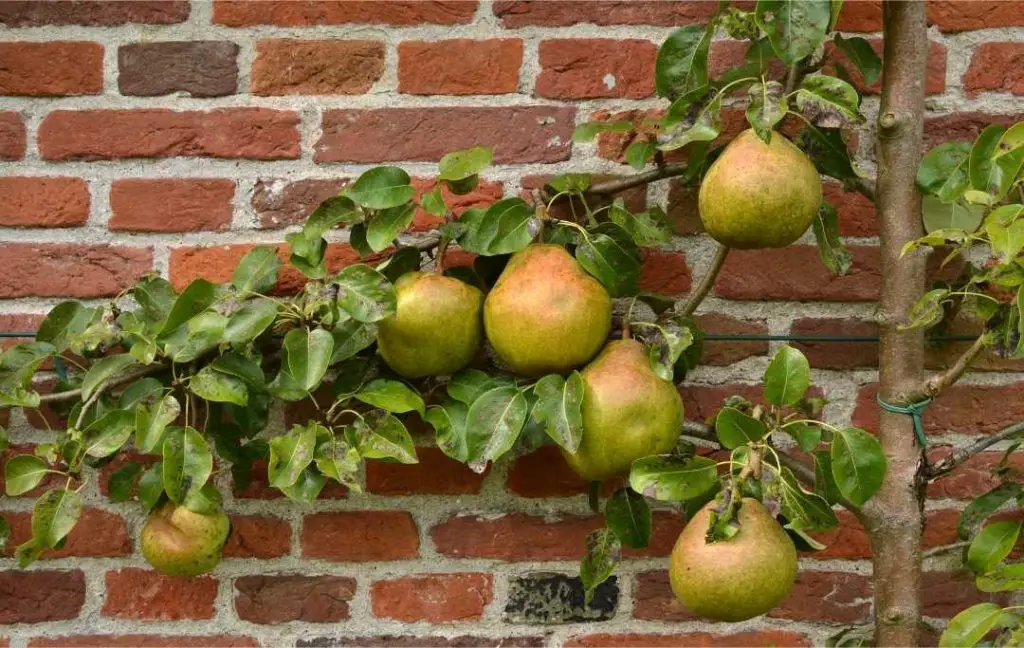
After planting a pear tree, you should take care of it because it needs your attention and time for healthy growth.
- Your pear tree needs more water during the dry weather. Water is a very important factor during the establishment of the roots.
- At the start, you should apply a small number of fertilizers. ⅛ pound of Ammonium Nitrate is enough for each tree in moderately fertile soil. You can use fewer fertilizers if you have highly rich and fertile soil.
- In the summer season, if you see the leaves are turning into a pale green or yellowish colour then use a little fertilizer during the next year.
- Keep in mind that you need fruit from the pear tree.
- If you add too much nitrogen then the tree will produce more foliage instead of flowers and fruits.
PRUNING PEAR TREES
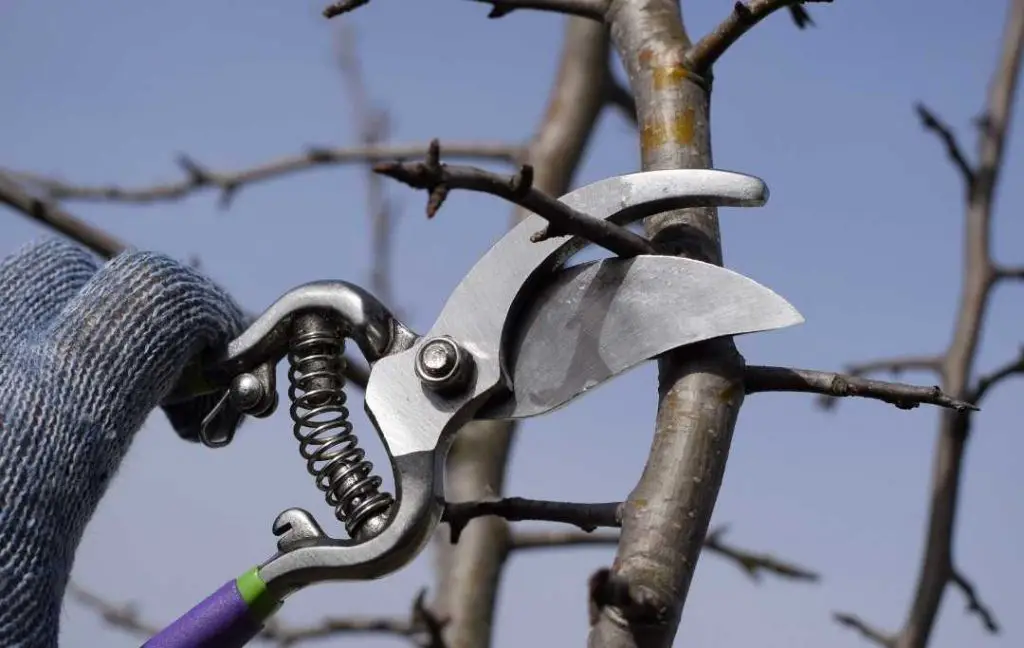
- Annually pruning keeps your tree healthy, this will make your tree productive and attractive.
- If you are growing dwarf variety then prune them to a central leader system.
- For standard-size trees, you can prune a central leader system or a modified leader system. This will help to maintain the size of the tree.
- The central leader system is a central trunk that has branches that spiral out every 5 to 8 inches. You should train the system in the early Summer of the first year.
- At that time you can also remove any shoots that form within 18 Inches of the ground. After pruning, you will get a tree that will look like a Christmas tree.
You can use spreaders to make the perfect shape of branches of the tree, this will help the branches to spread outward rather than upward. When the branches are young, clothespins help to push the branches away from the main trunk. If the branches are big enough then you can use wooden slats with a v shape notched into each end.
PEAR DISEASES AND DISORDERS
The common diseases which affect the growth of pear trees are fire blight and pear scab.
FIRE BLIGHT
The main reason for causing fire blight is a bacterium named Erwinia amylovora. These trees are respectable to fire blight infection especially in open flowers during bloom.
You can prevent your plants from this disease by the use of bactericidal stays. These sprays contain copper and streptomycin. If you want to prevent spreading the disease, remove the cuttings.
PEAR SCAB
The reason for this disease is a fungus named Venturia Pirina. This fungus will spread in several parts of the tree including flowers, leaves, fruits, and even young twigs.
This infection can change the shape of the fruit. The best solution against this disease is a fungicide. High humidity conditions are the main reason for causing fungus.
HARVEST AND STORAGE
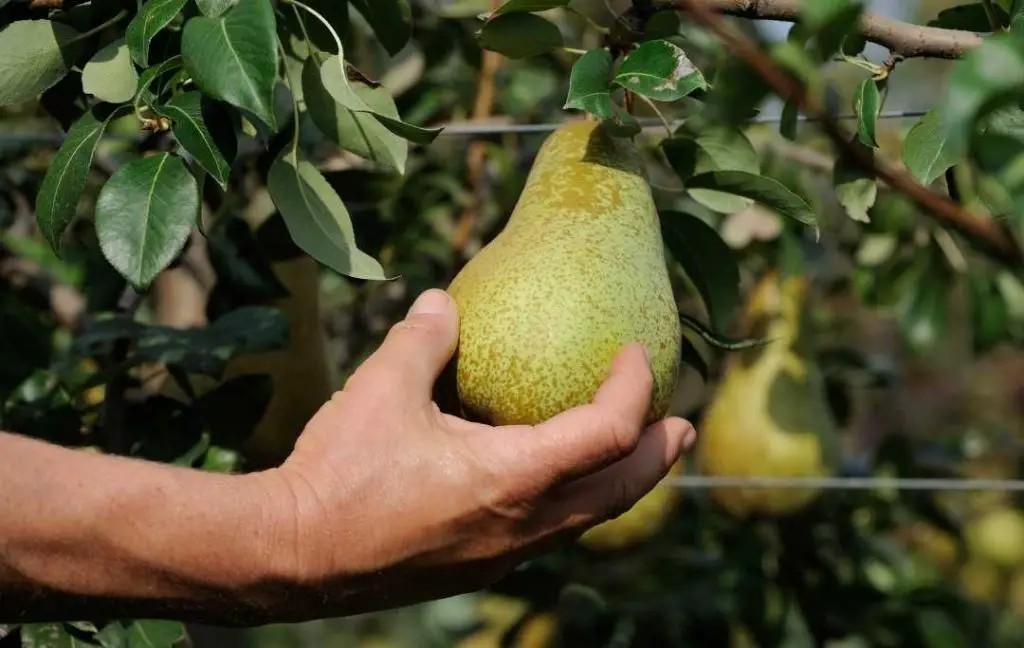
- When you see the pear is mature then you can harvest but remember the fruit should be hard enough. You can get high-quality fruit by ripening it at room temperature.
- When the pear trees are mature then they start producing a higher yield.
- It is better to eat fresh fruit but sometimes it happens that you have a large quantity of fruit then you should store the extra fruit for future use.
- Fully grown fruit but hard can be stored in the refrigerator for one week. The other option is to store it in a container in a cool and dark place for one to two months.
- You can also use the pear for longer storage.
Read more
